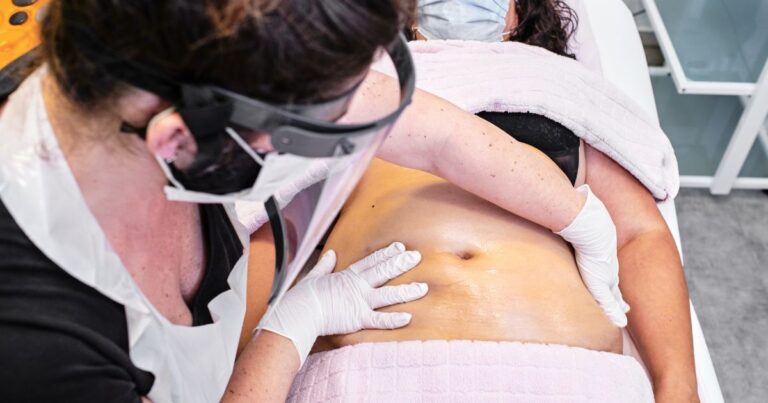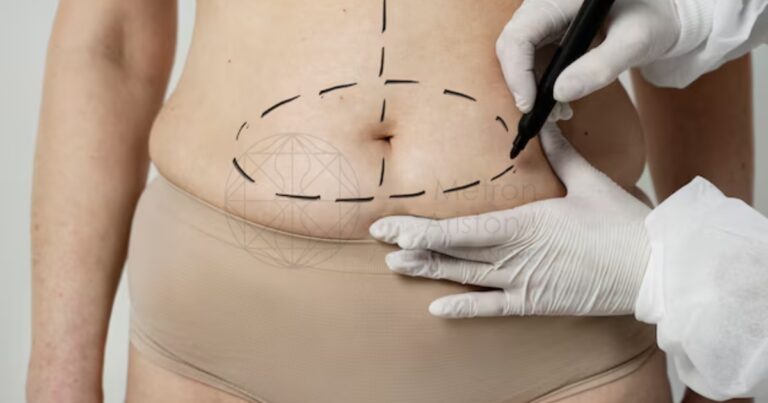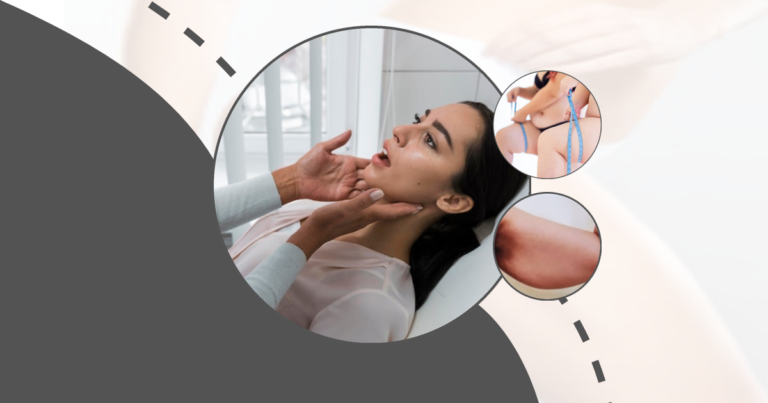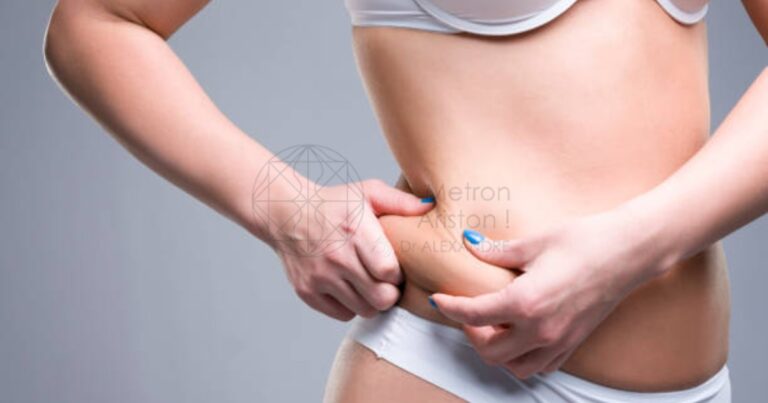Does Liposuction Decrease Estrogen Levels
Liposuction is a popular cosmetic procedure aimed at removing excess fat from specific areas of the body. While its primary goal is aesthetic enhancement, many wonder if it can also influence hormone levels, particularly estrogen. This article delves into the relationship between liposuction and estrogen levels, exploring whether this procedure can indeed reduce or decrease estrogen levels.
Estrogen and Its Role in the Body
Functions of Estrogen
Estrogen is a crucial hormone in the human body, playing a significant role in various physiological processes. It is primarily responsible for the development and regulation of the female reproductive system and secondary sexual characteristics. Beyond reproduction, estrogen also influences bone density, skin health, and cardiovascular function.
- Regulates menstrual cycle and reproductive system
- Maintains bone density and skin elasticity
- Supports cardiovascular health
Sources of Estrogen Production
Estrogen is produced in several parts of the body, with the ovaries being the primary source in premenopausal women. However, fat tissue, adrenal glands, and even the brain contribute to estrogen production. This diverse production network ensures that estrogen levels are maintained even when ovarian function declines, such as during menopause.
- Ovaries: Main source in premenopausal women
- Adipose tissue: Secondary source, especially post-menopause
- Adrenal glands and brain: Minor contributors
The Relationship Between Fat Tissue and Estrogen
Adipose Tissue as an Endocrine Organ
Fat tissue, or adipose tissue, is not just a passive storage site for excess calories. It acts as an endocrine organ, releasing hormones and other substances that influence metabolism and inflammation. One of its roles is in the production of estrogen, particularly in postmenopausal women.
- Produces hormones like leptin and adiponectin
- Influences metabolism and inflammation
- Contributes to estrogen production
Fat Cells and Estrogen Synthesis
Fat cells, or adipocytes, contain an enzyme called aromatase, which converts androgens into estrogen. This process is particularly significant in individuals with higher body fat percentages, as more fat cells can lead to increased estrogen production. This relationship highlights the potential impact of fat reduction on hormone levels.
- Aromatase enzyme converts androgens to estrogen
- Higher body fat can lead to increased estrogen levels
- Fat reduction may influence estrogen synthesis
Liposuction and Its Impact on Hormone Levels
Physiological Effects of Fat Removal
Liposuction involves the surgical removal of fat cells from targeted areas, which can lead to immediate changes in body composition. This reduction in fat mass may influence the body’s hormonal balance, including estrogen levels, due to the decreased number of estrogen-producing cells.
- Reduces fat mass and alters body composition
- Potentially decreases estrogen-producing cells
- May influence overall hormonal balance
Potential Changes in Estrogen Production
The removal of fat cells through liposuction could lead to a decrease in estrogen production, especially in areas with high concentrations of adipose tissue. However, the extent of this change can vary based on individual factors such as the amount of fat removed and the body’s compensatory mechanisms.
- Decrease in estrogen production possible
- Varies based on individual factors
- Compensatory mechanisms may stabilize hormone levels
Does Liposuction Affect Estrogen Levels in Women
Short-term Hormonal Changes
In the short term, liposuction may lead to fluctuations in hormone levels as the body adjusts to the sudden loss of fat cells. These changes can include a temporary decrease in estrogen levels, but the body often compensates over time to restore balance.
- A temporary decrease in estrogen levels is possible
- Body adjusts to sudden fat loss
- Hormonal balance often restored over time
Long-term Hormonal Stabilization
Over the long term, the body tends to stabilize its hormone levels, even after significant changes like those induced by liposuction. While there may be a reduction in estrogen production initially, the body’s regulatory systems often compensate to maintain hormonal equilibrium.
- Long-term stabilization of hormone levels
- The body’s regulatory systems maintain a balance
- Estrogen levels may normalize over time
Factors Influencing Post-Liposuction Hormone Changes
Age and Menopausal Status
Age and menopausal status are significant factors in determining how liposuction affects hormone levels. Younger individuals may experience quicker hormonal adjustments, while postmenopausal women might see more pronounced changes due to their reliance on adipose tissue for estrogen production.
- Younger individuals adjust more quickly
- Postmenopausal women may see more changes
- Age influences hormonal response
Amount of Fat Removed
The volume of fat removed during liposuction can directly impact hormone levels. Larger amounts of fat removal may lead to more significant changes in estrogen production, while smaller procedures might have a minimal effect.
- Larger fat removal impacts estrogen more
- Smaller procedures have minimal effect
- The volume of fat removed is a key factor
Overall Body Composition
A person’s overall body composition, including muscle mass and fat distribution, can influence how liposuction affects hormone levels. Those with higher muscle mass may experience different hormonal responses compared to individuals with higher body fat percentages.
- Muscle mass influences hormonal response
- Fat distribution affects estrogen production
- Overall composition plays a role
Can Liposuction Reduce Estrogen Levels in Specific Body Areas
Targeting Estrogen-Producing Fat Deposits
Liposuction can be used to target specific areas of the body where fat deposits are known to produce estrogen. By focusing on these areas, it may be possible to reduce localized estrogen production, although the overall impact on systemic hormone levels may be limited.
- Targets specific estrogen-producing areas
- May reduce localized estrogen production
- Limited impact on systemic hormone levels
Effectiveness of Localized Fat Removal
The effectiveness of liposuction in reducing estrogen levels depends on the precision of the procedure and the individual’s unique physiology. While localized fat removal can decrease estrogen production in targeted areas, the body’s overall hormonal balance may remain largely unchanged.
- Precision of the procedure affects the outcome
- Individual physiology plays a role
- Overall hormonal balance may remain stable
Psychological Effects of Liposuction on Hormone Levels
Stress Response and Cortisol
Undergoing liposuction can be a stressful experience, potentially affecting cortisol levels, a hormone related to stress. Elevated cortisol can influence other hormones, including estrogen, highlighting the importance of managing stress during recovery.
- Liposuction can elevate stress levels
- Cortisol influences other hormones
- Stress management is crucial
Mood Changes and Emotional Well-being
The psychological impact of liposuction can also affect hormone levels. Changes in body image and self-esteem may lead to mood fluctuations, which can, in turn, influence hormonal balance. Ensuring emotional well-being is an essential aspect of post-liposuction care.
- Body image changes affect mood
- Mood influences hormonal balance
- Emotional well-being is key
Alternative Methods for Managing Estrogen Levels
Diet and Exercise
Diet and exercise are effective ways to manage estrogen levels naturally. A balanced diet rich in fiber and low in processed foods, combined with regular physical activity, can help regulate hormone levels and support overall health.
- A balanced diet regulates hormones
- Regular exercise supports health
- Natural methods for hormone management
Hormone Replacement Therapy
For those experiencing significant hormonal imbalances, hormone replacement therapy (HRT) may be an option. HRT can help restore estrogen levels, particularly in postmenopausal women, but should be considered under medical supervision.
- HRT restores estrogen levels
- Suitable for postmenopausal women
- Requires medical supervision
Dr Alexandre’s Approach to Liposuction and Hormone Balance
Dr. Alexandre emphasizes a personalized approach to liposuction, considering each patient’s unique hormonal profile and health goals. By tailoring treatment plans and providing post-procedure support, Dr. Alexandre aims to optimize both aesthetic and hormonal outcomes. Liposuction health impacts Liposuction can cause bruising swelling and pain after the procedure Some people may experience complications like infection or uneven results Liposuction wellness effects can help people feel more confident about their body shape and may encourage them to maintain a healthier lifestyle after the procedure
Liposuction contraception myth Some people wrongly believe that getting liposuction can prevent pregnancy but this is not true and liposuction has no effect on birth control Liposuction maximum extraction refers to the highest amount of fat that can be safely removed during a liposuction procedure Doctors set limits on how much fat they can take out to keep patients healthy and avoid complications
Nurse practitioners liposuction capabilities include assisting doctors during the procedure and providing pre and post-operative care to patients Liposuction paradoxical gain happens when fat comes back in new places after removing it from one area People who get liposuction might end up with more fat in unexpected parts of their body later on
Lymphedema surgery liposuction is a special operation that removes extra fat and fluid from swollen body parts to help people with lymphedema feel more comfortable and move easier Doctors use small tubes to suck out the excess tissue during Alcohol post liposuction Drinking alcohol after liposuction can be dangerous and slow down healing It’s best to avoid alcohol for a few weeks after the surgery to help your body recover faster
Liposuction pricing UAE varies depending on the clinic and the amount of fat removed but generally costs between 15000 to 40000 dirhams for a single treatment area Liposuction leaves faint marks on the skin where small incisions are made to remove fat These tiny scars usually fade over time and become barely noticeable
- Personalized treatment plans
- Consideration of hormonal profiles
- Post-procedure support for optimal outcomes
Research Findings on Liposuction and Estrogen Levels
Recent studies have explored the impact of liposuction on estrogen levels, with mixed results. Some research suggests a temporary decrease in estrogen production, while others indicate minimal long-term effects. Ongoing studies continue to investigate this complex relationship.
- Mixed research results
- Temporary decrease in some cases
- Ongoing studies for deeper insights
In conclusion, while liposuction can influence estrogen levels by reducing fat mass, its primary purpose remains cosmetic. Those considering liposuction for hormonal reasons should seek professional medical advice to explore all available options.
FAQ’s
Does Removing Fat Cells Affect Hormones?
Removing fat cells through liposuction can affect hormone levels, particularly estrogen, due to the reduction in estrogen-producing cells. However, the body’s compensatory mechanisms often work to maintain hormonal balance over time.
Can Liposuction Help with Hormonal Imbalance?
Liposuction is not typically used as a treatment for hormonal imbalance. While it can influence hormone levels by reducing fat mass, it is primarily a cosmetic procedure. Those seeking to address hormonal imbalances should consult with healthcare professionals for appropriate treatments.
How Long Does It Take for Hormones to Balance After Liposuction?
Hormonal balance after liposuction can vary from person to person. Typically, it may take a few weeks to several months for the body to adjust and stabilize hormone levels. Factors such as age, overall health, and the extent of the procedure can influence this timeline.








